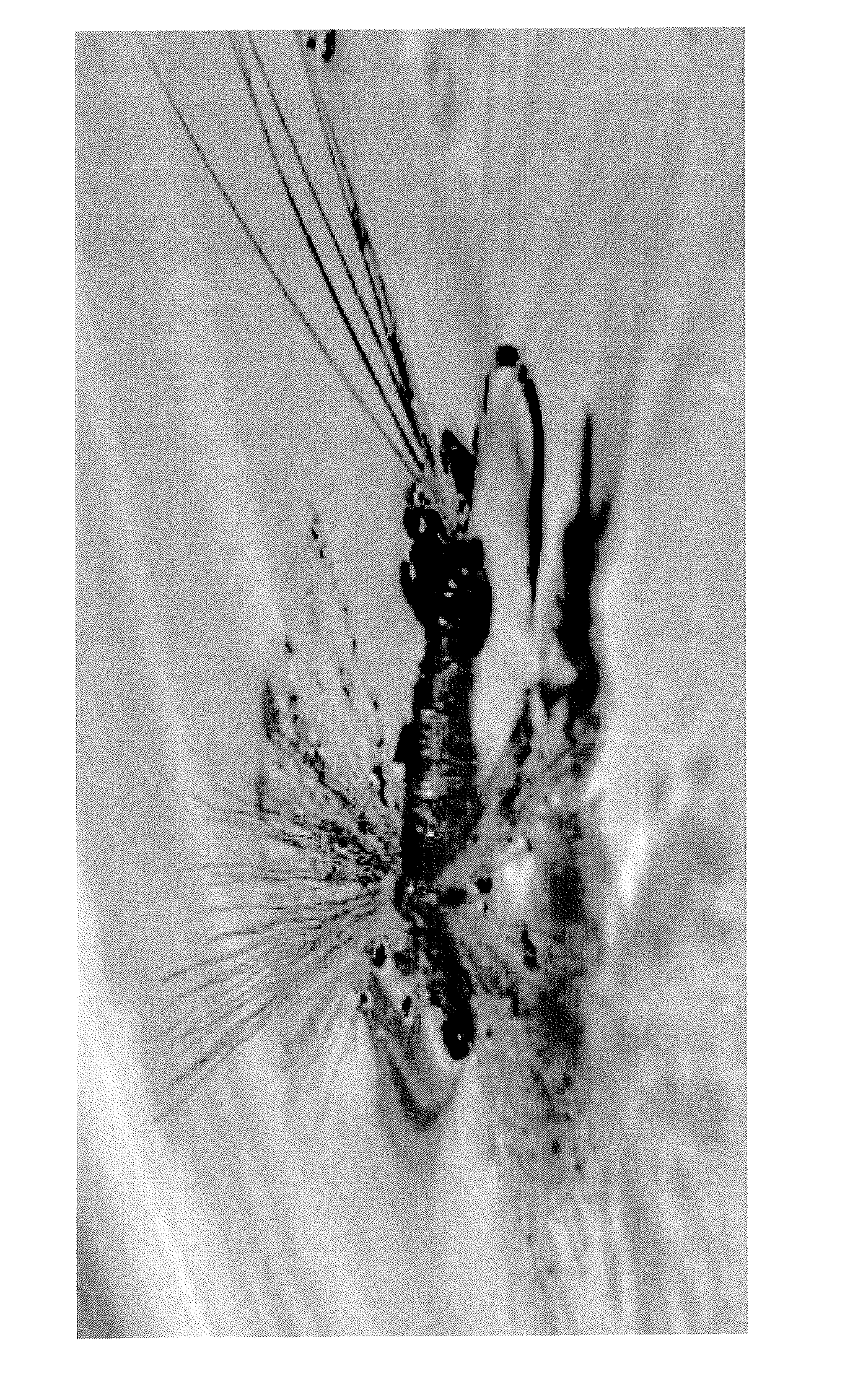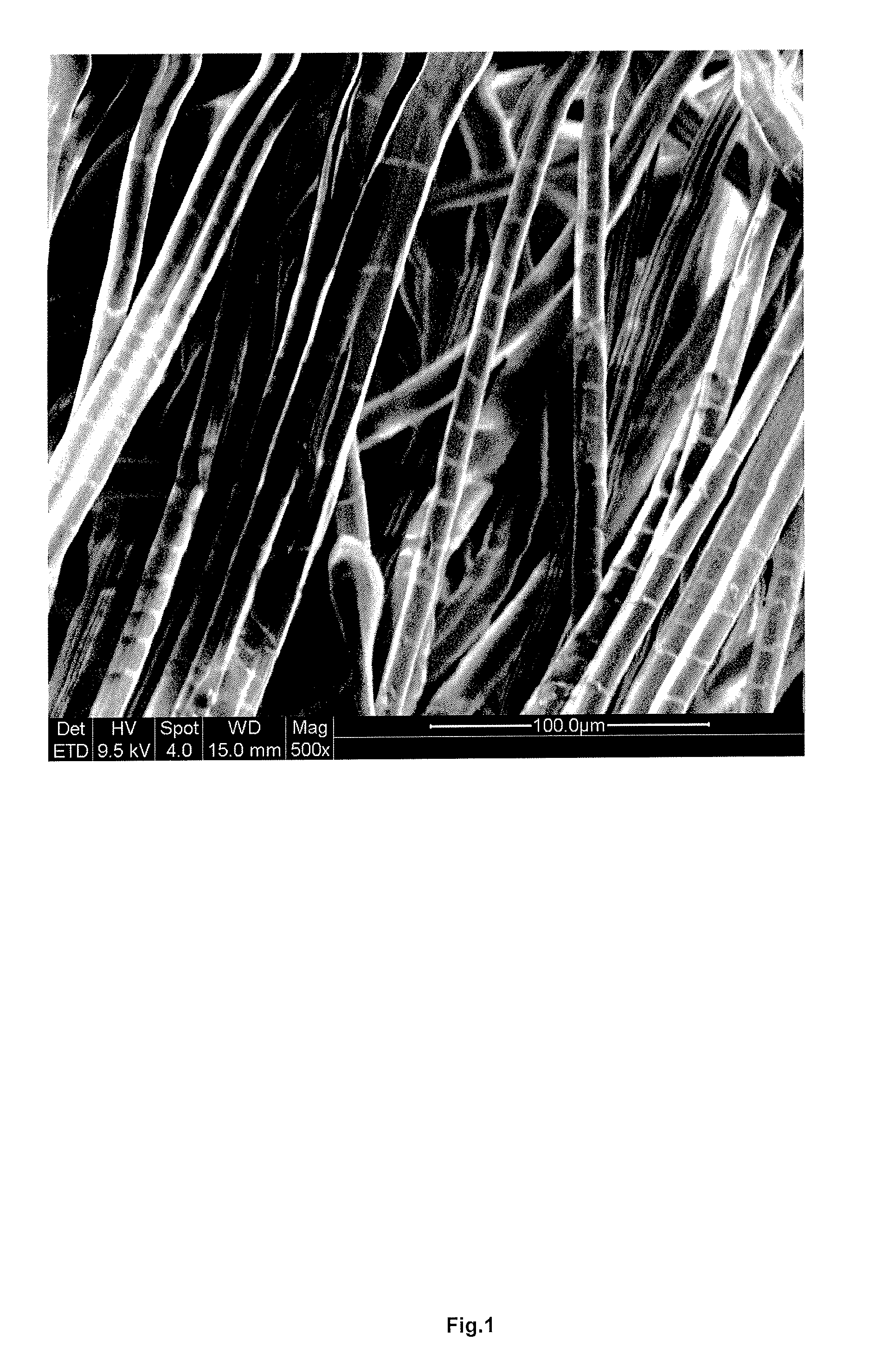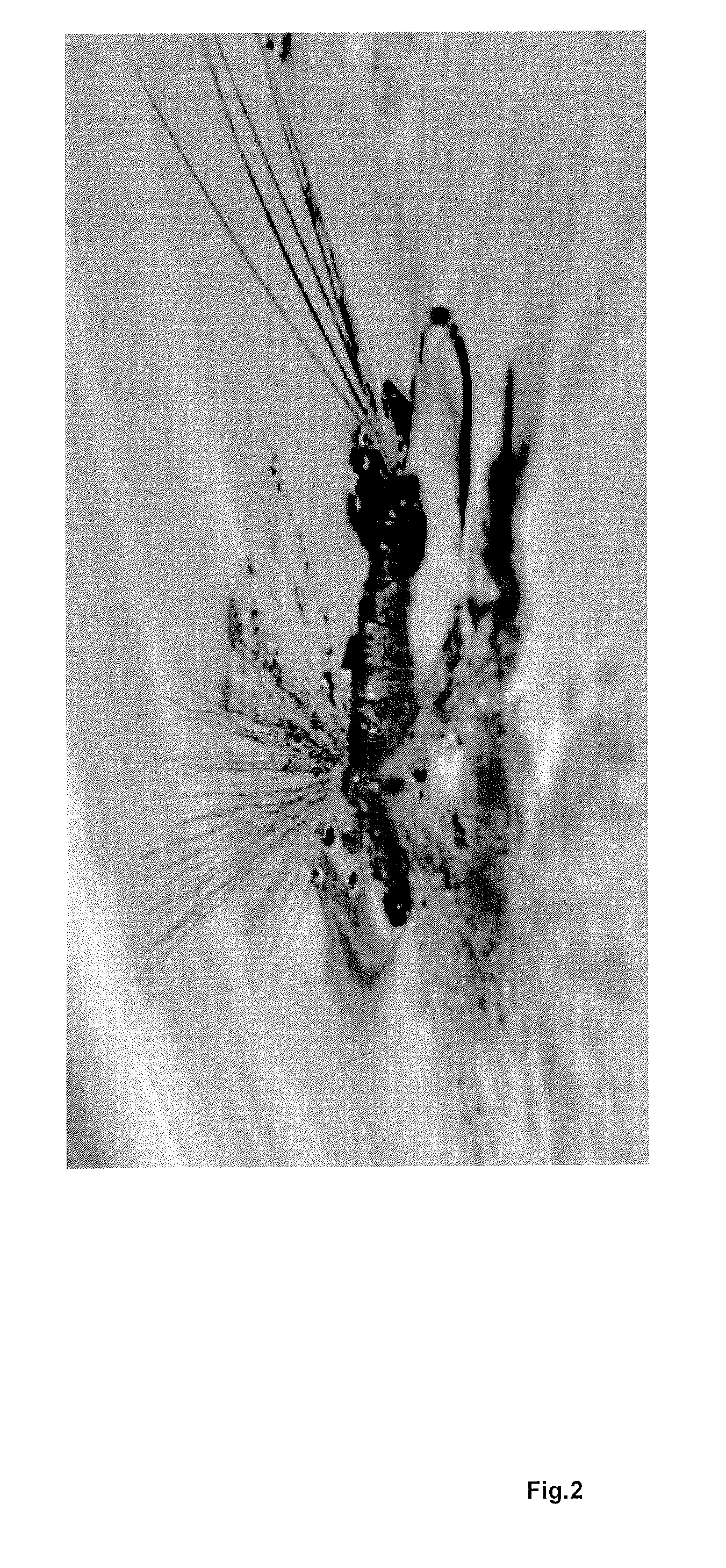Terminal fly fishing tackle
a technology of fishing tackle and terminals, applied in fishing, chemical vapor deposition coating, animal husbandry, etc., can solve the problems of time-consuming, complex work, and large inventory, and achieve the effects of long durability, light weight, and anti-microbial and/or anti-fouling attributes
- Summary
- Abstract
- Description
- Claims
- Application Information
AI Technical Summary
Benefits of technology
Problems solved by technology
Method used
Image
Examples
example 1
Hydrophilic Coating of a Wet Fly
[0092]TiCla and H2O were used to coat the fly-fishing fly, which is supposed to sink, e.g. a salmon fly, with TiO2. Films were grown in a commercial F-120 Sat reactor (ASM Microchemistry) by using TiCl4 (Fluka; 98%) and H2O (distilled) as precursors. Both precursors were kept at room temperature in vessels outside the reactor during the deposition. The reactor pressure was maintained at ca. 1.8 mbar by employing an N2 carrier-gas flow of 300 cm3 min−1 supplied from a Nitrox 3001 nitrogen purifier with a purity of 99.9995% inert gas (N2+Ar) according to specifications.
[0093]The films were grown using a pulsing scheme of 2 s pulse of TiCl4 followed by a purge of 1 s. Water was then admitted using a pulse of 2 s followed by a purge of 1 s. This complete pulsing scheme makes up one pulsing cycle and the films were made using different numbers of such cycles (typically from 20-2000 cycles). Films can be formed in a relatively large temperature interval as ...
example 2
[0100]A salmon fly-fishing fly was coated as described as example 1. The contact angle was subsequently measured with a static water contact angle machine (SCA20, DataPhysics GmBH, Germany) and was significantly reduced when compared to a uncoated salmon fly
example 3
[0101]A salmon fly-fishing fly was coated as described as in example 1. After 5, 10, 15 and 20 minutes exposure in UV light (4 W / m2, wavelength 270 nm), a water drop was placed on top the surface of the fibers and the body of the fly. The contact angle was subsequently measured with a static water contact angle machine (SCA20, DataPhysics GmBH, Germany). The contact angle was measured after the time intervals 5, 10, 15 and 20 minutes and the contact angle dropped from 100°, to 80° to 60° and at last 30° with the given exposure time. After 20 minutes of exposure the fly became super hydrophilic.
PUM
| Property | Measurement | Unit |
|---|---|---|
| Temperature | aaaaa | aaaaa |
| Temperature | aaaaa | aaaaa |
| Temperature | aaaaa | aaaaa |
Abstract
Description
Claims
Application Information
 Login to View More
Login to View More - R&D
- Intellectual Property
- Life Sciences
- Materials
- Tech Scout
- Unparalleled Data Quality
- Higher Quality Content
- 60% Fewer Hallucinations
Browse by: Latest US Patents, China's latest patents, Technical Efficacy Thesaurus, Application Domain, Technology Topic, Popular Technical Reports.
© 2025 PatSnap. All rights reserved.Legal|Privacy policy|Modern Slavery Act Transparency Statement|Sitemap|About US| Contact US: help@patsnap.com



